Flowsheet of Copper Extraction Process by Froth Flotation
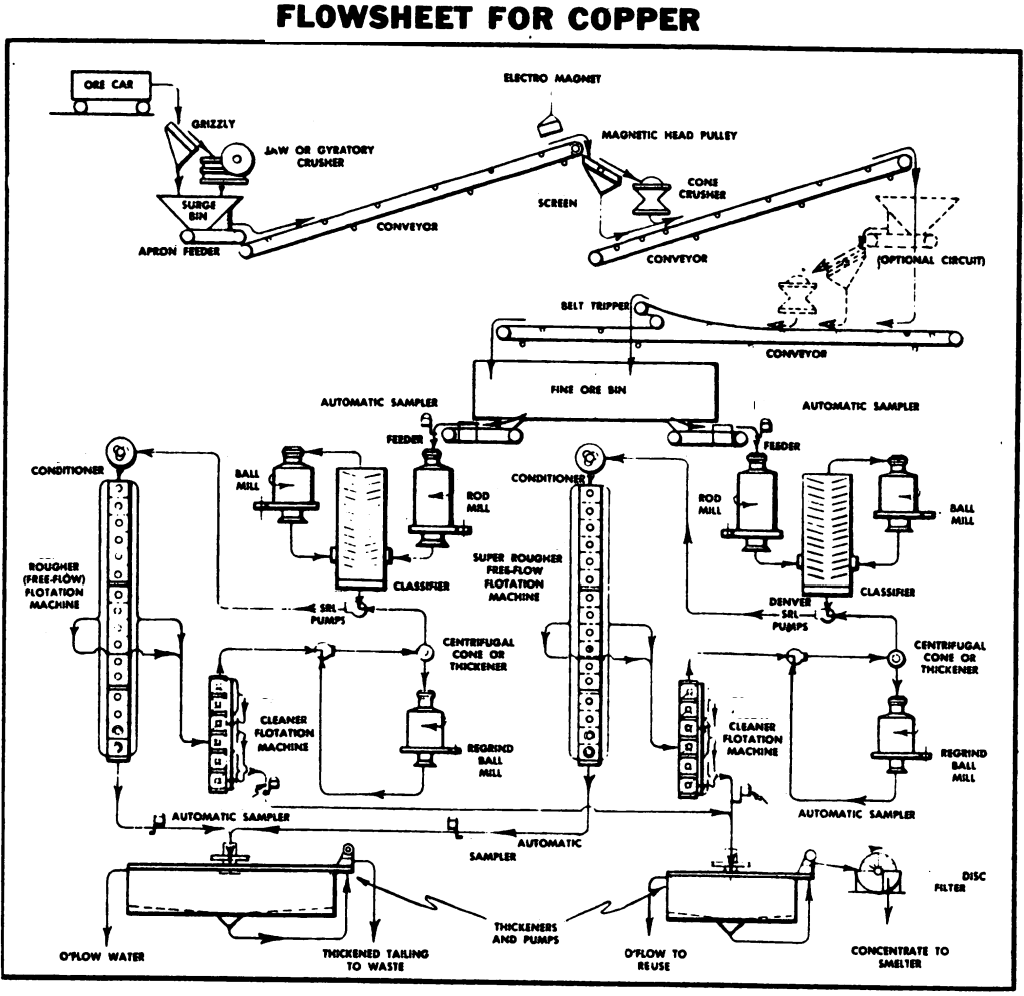
Chrysocolla Flotation
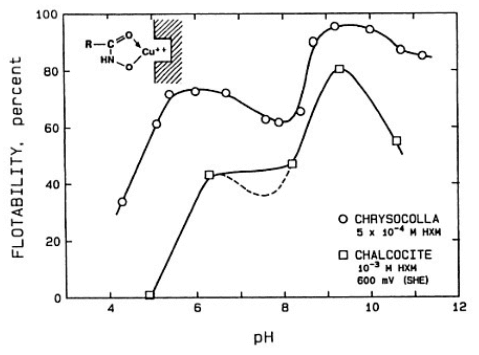
The effect of pH on the flotation response of Chrysocolla and chalcocite with potassium octyl hydroxamate as collector. The potential for the chalcocite system is slightly oxidizing. A detailed electrochemical investigation of chalcocite with a collector that does not oxidize, namely a chelating compound, potassium octyl hydroxamate shows the pH dependence of the floatability of chrysocolla (a hydrous […]
Low Molybdenum Recovery in Copper-Moly Flotation Circuit

In a flotation locked cycle test, a poor/low moly recovery was obtained at 47.3% as it appeared that molybdenum had not reached equilibrium. The calculated head grade trend, shown in Figure 8-28 indicates that the moly and most of the other elements had not reached convergence when the test was terminated. Figure 8-29 shows the […]
Understand Fluorine in Copper Concentrate (F in Cu Conc)
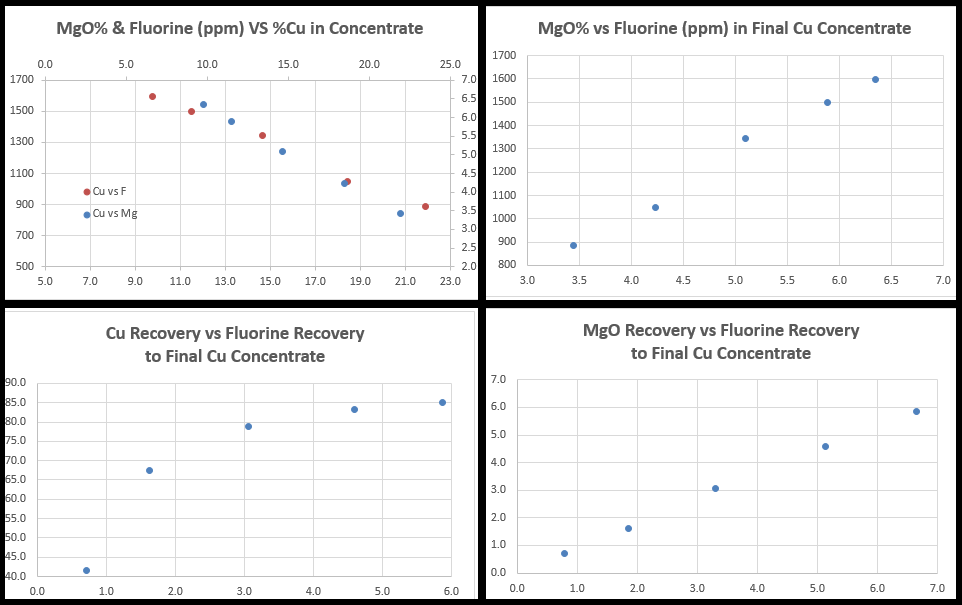
A copper flotation concentrate is over limit on Fluorine (F) content and Contamination. When assaying and plotting Copper (Cu) from times concentrates and the related fluorine and Magnesium Oxide (MgO) assays in various ways as shown below; one can see the obvious relationships. In the case, reducing Fluorine content and contamination of the copper conc […]
Pyrite Depression in Copper Flotation
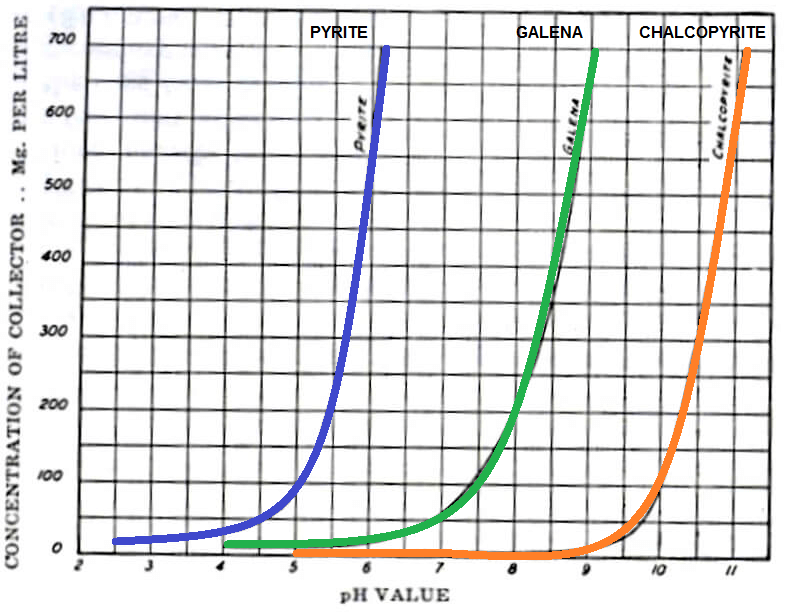
The Pyrite Depression in a Copper Only Flotation circuit is simple enough. If your froth flotation system only tries to recover chalcopyrite-copper, you need to bring the plant’s pH up to the other side (right side) of the PYRITE curve. The more flotation collector you have on, the higher you will need to increase that pH […]
Effect of pH on Copper Cleaner Flotation

In the study, batch cleaner tests were conducted to confirm the target regrind size and select the cleaner pH conditions. The objective of the high pH, collector-starved environment in the cleaners is: To liberate and reject attached silicates, Depress the previously-floated pyrite. If the floatability imparted on the pyrite in rougher flotation is not adequately […]
Effect of Collector on Copper Flotation Metallurgy
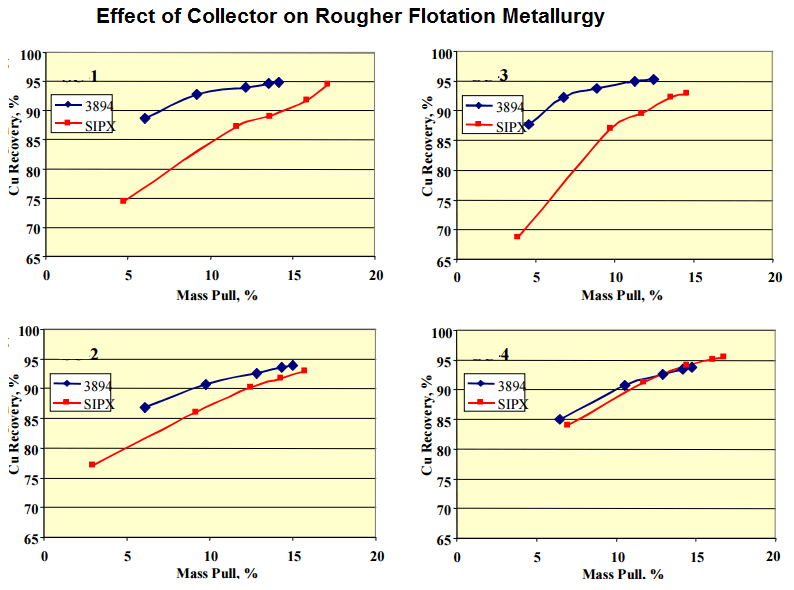
A pretty clean and relatively easy to treat ore was tested suggesting a collector optimization strategy would probably yield only relatively minor incremental metallurgical improvements. Therefore, collector suite fine-tuning was deemed largely better left for future optimization, possibly when the plant is in operation. In earlier studies Sumitomo had adopted the use of thionocarbamate Cytec […]
Effect of pH on Copper Flotation Recovery VS Mass Pull

An example of testing the effect of pH on rougher flotation on pit samples and the results are presented. Since this is only an example, it needs reminding that not all ores will respond the same. Here, rougher flotation is most Selective at a pH of 9.5 as pH levels in the 9 to 10 […]
Lead Depression in Bulk Cu/Pb Flotation
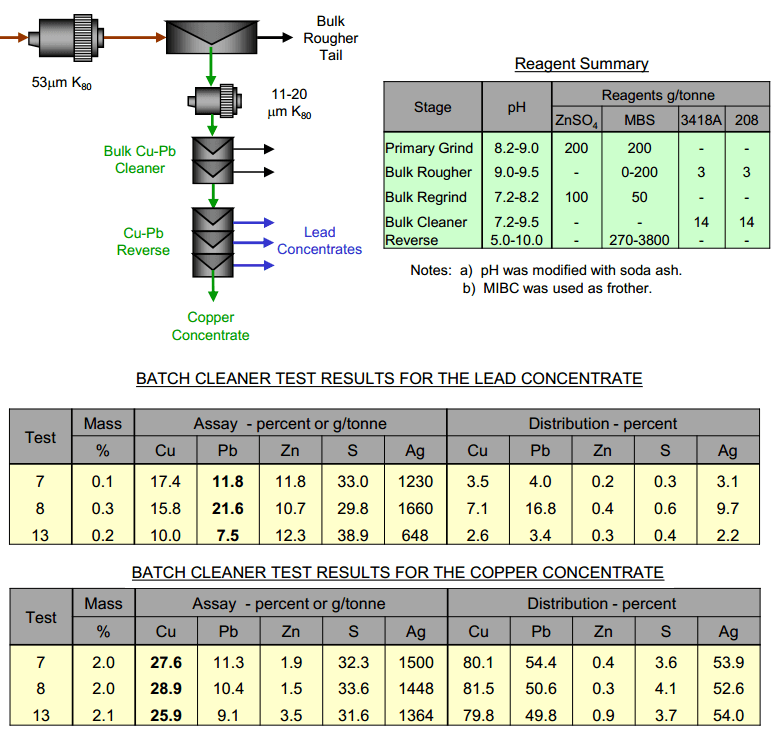
A series of tests were completed with bulk copper and lead flotation with the depression of lead and flotation of copper. This alternative utilized MBS as the primary depressant in both the bulk and reverse circuits. The challenge of this scheme is that the lead concentrate will be the tailings of the reverse circuit and will likely […]
Copper – Lead Separation by Lead Depression
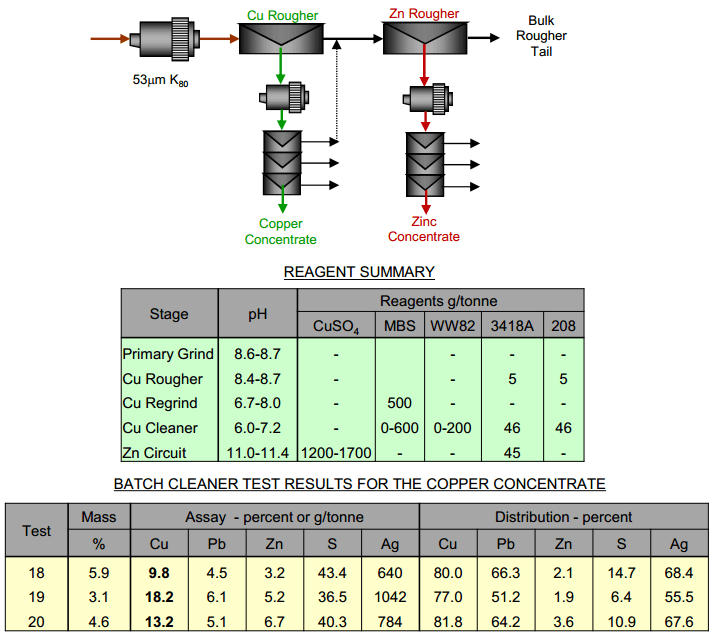
Another method to separate Pb from Cu is in depressing the lead away from the copper to float. Here, three batch cleaner tests were performed with additional depressants to reject more lead from the copper flotation concentrate. The baseline test utilized no MBS depression in the rougher circuit to maximize copper recovery, but MBS depression in the copper […]
